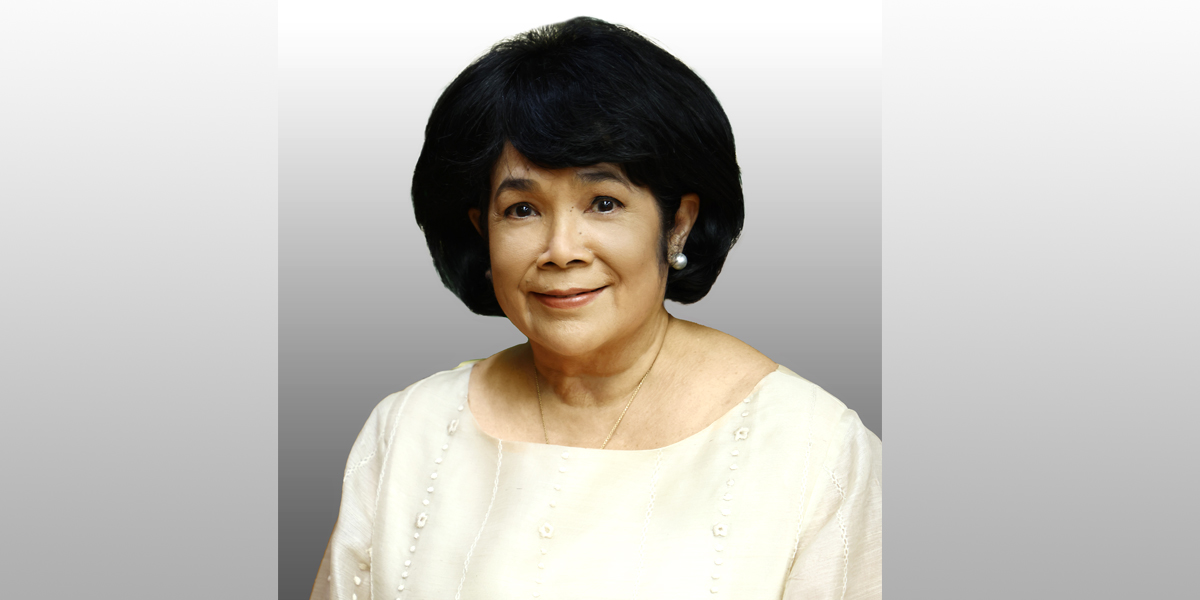
01 Jul Interview with Hon. Maria Antonia Yulo Loyzaga, Secretary of the Department of Environment and Natural Resources (DENR), Philippines
In your role as Secretary of the Department of Environment and Natural Resources (DENR), could you give us an overview of your strategic vision for the sector and the key priorities the DENR has set for the year ahead?
Traditionally, the Philippine government has focused on protecting and conserving natural resources. Our approach, however, aims to integrate these resources into economic growth and sustainable development. For example, minerals currently contribute only 0.45% to our GDP and we lack comprehensive data on other resources. We’re new to the administration and are establishing a natural capital accounting system to determine the true value of our resources. This system involves physical inventory by DENR and economic valuation by the National Economic Development Authority and the Philippine Statistics Authority. We’re emphasizing a systems approach, recognizing the interdependence of ecosystems. For instance, without forests, we wouldn’t have coastal areas or sufficient water resources.
The president supports this view, as highlighted in his State of the Nation address, where he emphasized the role of blue forests in climate change mitigation and disaster risk reduction. Our policies now aim to reflect this interconnectedness in national planning and climate risk management. Increasing forest cover is crucial. The Philippines has 15 million hectares of classified forest lands, but only about 7 million hectares are currently covered by forests. Using geospatial data, we plan to prioritize 1.2 million hectares for reforestation, timber production and agroforestry.
Biodiversity is another priority. The Philippines has high endemicity in plants and animals, which relies on habitat conservation. Balancing exploration and extraction with biodiversity conservation is a delicate task. Recently, we engaged investors in building the largest integrated LNG facility along the Verde Island Passage, a marine biodiversity hotspot. We’ve invited them to participate in environmental protection and biodiversity conservation programs in the area. This initiative includes local governments, communities and NGOs working on issues like plastic pollution and coral reef protection. By aligning our efforts with other departments, we aim for positive outcomes in biodiversity conservation.
Improving air and water quality is another priority. Our Environment Management Bureau works with local governments, transport and energy providers. We monitor emissions in real-time from 30 of the 35 coal plants and several cement plants using our continuous emissions monitoring system. Addressing air quality issues from transport and industry is also part of our plan to reduce emissions.
In April, the President issued an executive order creating the Water Resources Management Office within the DENR, as the Philippines lacks a dedicated Department of Water. Using our geospatial database, we’ve mapped all surface water and identified governance structures. We’ve also found that about 40 million Filipinos lack access to safe, sustainable drinking water, especially in isolated and small island communities. To address this, we’re prioritizing affordable desalination units and community training, treating these technologies as social enterprises rather than donations. We’re focusing on island barangays first, seeking funding from the government, philanthropies and the private sector. Philanthropic financing can establish a sustainable economic model for water resource management.
The government is focusing on creating investment opportunities in renewable energies as part of its “green lanes” initiatives. What are some of the key opportunities and incentives available for foreign investors?
The Philippines is rich in both metallic and non-metallic minerals, such as nickel, cobalt and copper. We see ourselves as key suppliers in the value chain for critical minerals, especially with our strong historical and evolving relationship with the United States.
In energy, we’re preparing for technologies like small modular nuclear reactors. The DENR is developing a roadmap for permitting and hazard management. For renewable energy, we’ve updated guidelines for offshore wind and floating solar projects. We’ve partnered with the US EPA to build capacity for managing risks from new nuclear technologies and to craft permitting processes.
We’re learning from the agriculture sector to reduce methane emissions from traditional wet rice farming through improved practices, supported by international trade delegations.
What is DENR’s Strategy to enhance climate resilience and disaster preparedness across the Philippines?
First the National Adaptation Plan (NAP), which hadn’t been done in over a decade. Second, the Nationally Determined Contribution Implementation Plan (NDCIP), outlines sectoral greenhouse gas reduction goals and costs, developed with help from partners like the Asian Development Bank. Third is our comprehensive greenhouse gas inventory. These initiatives help us determine our climate finance needs: no country should choose between climate finance and development finance, as both aim to improve national development and quality of life.
At COP28 we showcased how our work has opened up various financing opportunities. We secured a seat on the Loss and Damage Fund board, giving climate-vulnerable countries like ours a voice. The NAP estimates the cost of inaction by 2030 at over a trillion pesos, with adaptation costs at about 1.4 trillion pesos ($23.8 billion). We are implementing program convergence budgeting, where agencies like our Water Resources Office, the Department of Public Works and Highways and the National Irrigation Authority collaborate. This integrated approach to flood control, water supply, irrigation and hydropower aims to maximize investment value and has received positive responses from various departments.
What is your final message for the millions of readers of USA Today about choosing the Philippines as their next business, tourism, or investment destination?
The strong historical bond between the United States and the Philippines is reflected in the large number of Filipinos contributing productively to the US. Many Filipino scientists, engineers and professionals have built successful careers there. We are proud of them and hope they will return, even briefly, to share their expertise as the Philippines advances under this administration. Organizations like the Philippine-American Academy of Science & Engineering (PAASE) exemplify this exchange, with members returning to assist through various departments, including Science and Technology. These contributions are vital for our sustainable development goals.

Sorry, the comment form is closed at this time.